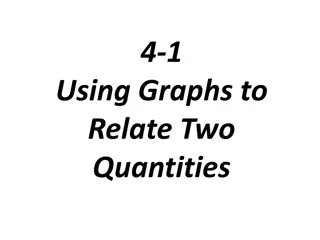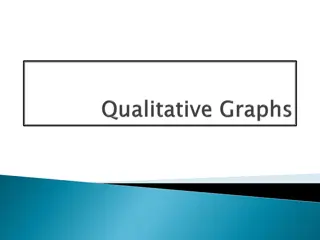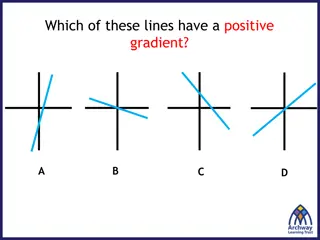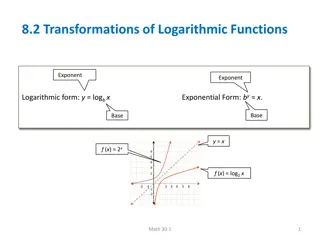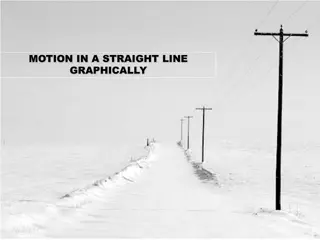Guidelines for Sketch Graphs in Higher Level Exams
A sketch graph in assessments like the PA report Revised Higher 2012 should not be rough or inaccurate but neat and correctly representing important values. Axes should be labeled with names and units, the origin should be marked, and important values linked with a dotted line. The graph line should not flatten out, stop abruptly, or start away from the origin. Common errors include unlabelled axes, freehand lines curving incorrectly, and missing units. Markers look for a correct shape, proper labeling, leveling off at key points, and starting from zero in sketches.
Download Presentation

Please find below an Image/Link to download the presentation.
The content on the website is provided AS IS for your information and personal use only. It may not be sold, licensed, or shared on other websites without obtaining consent from the author. Download presentation by click this link. If you encounter any issues during the download, it is possible that the publisher has removed the file from their server.
E N D
Presentation Transcript
Sketch Graphs Extract from PA report Revised Higher 2012 Question 32 Part (a) It appears that many candidates are misinterpreting sketch as meaning rough or inaccurate . A sketched graph is one which is not drawn to scale, ie there is no need to ensure that values are positioned in proportion along the axes. However, appropriate values still need to be shown on the axes and the graph line should be drawn neatly in correct relation to these important values. It would also be good practice to link any important values to the graph line with a dotted reference line. Axes need to be labelled with the names and units of the quantities. The origin needs to be labelled.
Errors seen by Markers included: unlabelled axes unlabelled origin freehand lines curving the wrong way (ie upwards) carelessly drawn freehand lines which did not stay at a steady level graph line flattening out above (or below) the 12 V value graph line stopped, but still on a rising trend, when the 12 V value is reached the value of 12 shown, but no unit indicated anywhere on the voltage axis a gap between the start of the graph line and the origin
Marking Instructions: Must have correct shape before any marks awarded. Must have at least one identifying label on axes before any marks awarded. Shape levelling off 1 mark At 12 V 1 mark Origin missing - 1 max Missing unit - 1 max Not starting from zero - 1 max 12 V voltage 0 time
1 12 V voltage 0 time Marks awarded 2. Comment: correct shape labelled correctly levels off at 12V
2 12 V 0 time Marks awarded 2. Comment: correct shape labelled correctly (the unit beside the 12 labels this axis.) levels at off at 12V
3 12 V 0 Marks awarded 2. Comment: correct shape labelled correctly (the unit beside the 12 labels this axis. The question asks for graph of voltage varying with time, since V identified then the x-axis must be time.) levels at off at 12V
4 12 voltage 0 time Marks awarded 1 . Comment: correct shape labelling incomplete (although the y-axis is labelled voltage there is no unit against the 12) levels off at 12V
5 12V voltage 0 time Marks awarded 0 Comment: wrong shape
6 12 0 Marks awarded 1 . Comment: correct shape Axes not labelled, however the 12 allows us to award the mark for shape and the levelling off. levels off at 12V
7 12 V time Marks awarded . Comment: correct shape Axes labelled. Doesn t level off at 12V. No dotted line as a guide. A line drawn at from top and bottom of the 12 used as a guide.
8 12 V Marks awarded 1 . Comment: correct shape. Axes labelled. No origin. Levels off at12V. No dotted line as a guide therefore a line drawn at top and bottom of the 12 used.
9 12 V 0 time Marks awarded 1. Comment: correct shape. Axes labelled. origin labelled. does not level at 12 V.
10 12 V 0 time Marks awarded 1 . Comment: correct shape. Axes labelled. origin labelled. does not start from zero.
Guide: Use a ruler to draw axes. Label axes and origin. Insert values and units where appropriate. Use dotted lines for reference. draw the shape in one single line. voltage 12V 0 time



